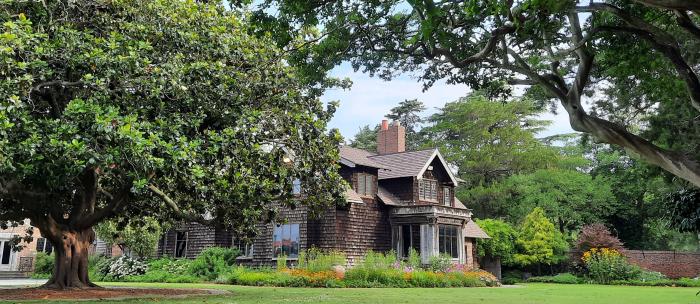You are here
The Hermitage Museum & Gardens

The Hermitage Museum & Gardens
Founded by William and Florence Sloane, The Hermitage Museum & Gardens is a historic estate museum of the arts, and nature on a 12.5-acre peninsula of the Lafayette River estuary in the heart of Norfolk Virginia. The gardens were originally designed by Florence Sloane and built in the 1920s. Some of our oldest planted trees date to this time. Of particular significance are the oldest Eastern Red Cedars (Juniperus virginia), framing some of the original garden rooms designed by Florence Sloane. In addition, a colossal Himalayan Cedar (Cedrus deodora) from the early days of garden construction stands at the entrance of our East Garden. We have numerous old, mature and large Live Oaks (Quercus virginiana) throughout the property. The largest specimen stands behind a wall and an Italian Renaissance Putti fountain of the 1920’s. While we have several Southern Magnolias our largest, oldest, and most well-proportioned Magnolia grandiflora is estimated to date to about 1940 and is the most iconic natural representation of the Hermitage brand. The accumulated and growing treasury of mature and maturing native woody plant taxa at or near the buffer zones of a brackish wetland makes the Hermitage an excellent location to study salt tolerance in a diverse mixture of woody and non-woody species. In addition, our gardens and woodlands have a rich and layered diversity of shrubs, understory and canopy trees such as Azaleas, Wax Myrtle, Forsythia, Viburnum, Boxwood, Camellias, Swamp Laurel, Dogwoods, Sassafras, Redbuds, Willow Oaks, Southern Red Oaks, Hackberries, Sweetgums and Loblolly Pines.

